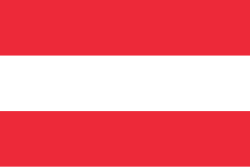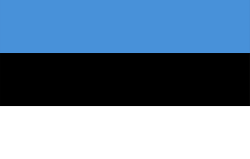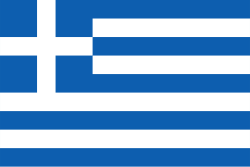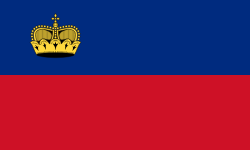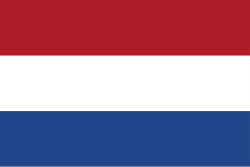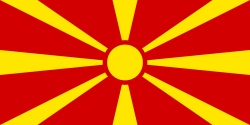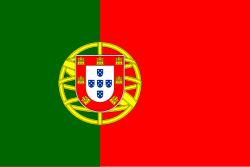General Information
Population
Immigration
Emigration
Working-age population
Unemployment rate
GDP
Refugees, Asylum seekers, IDPs
Citizenship
Territory
Migration Authorities
Responsible Body
Line Ministries
Agencies
Key Policy Documents
2024 - The right of UK citizens and their family members to move and reside freely in Cyprus
2022 - Civil Registry Law (141(I)/2002)
2014 - The Law on the Prevention and Combatting of Trafficking and Exploitation of Human Beings and Protection of Victims Ν. 60(I)/2014
2004 - Equal Treatment (Racial or Ethnic Origin) Law 59(I)/2004
2004 - Equal Treatment in Employment and Work Law 58(I)/2004
2004 - Law Fighting Racial and Other Discriminations 42(I)/2004
2000 - The Refugee Law 6(I)/2000
Description
Cyprus is a country of immigration, emigration, and transit, with increasingly diverse migration flows. Its population, which exceeded 966,400 inhabitants in 2023, has expanded steadily – with annual growth reaching 1.8% in 2023. Like in many European countries, the population is ageing, with 17.7% of people aged 65 or older by the end of 2023. Population growth is driven both by immigration and a positive natural increase. Net migration has been positive over the past 25 years, except for 2012-2015, due to economic downturn and shrinking job opportunities caused by the financial crisis.
Over the past decade, emigration from Cyprus has increased by 71.5%, with the number of emigrants rising from 15,733 in 2015 to 18,598 in 2019, and further up to 26,979 in 2023. However, most emigrants are non-Cypriot nationals, whose outflows increased significantly in recent years. In 2023, 8,383 EU nationals and 17,544 non-EU nationals left Cyprus, while Cypriot nationals accounted for only around 4% of all emigrants. The emigration of Cypriot nationals has in fact declined steadily, from 2,663 in 2016 to just 1,052 in 2023. In previous decades, emigration was mainly driven by economic factors. However, as the unemployment rate fell from over 7.2% in 2021 to below 4% in 2025, economic pressure to emigrate has eased.
As of 2024, the total stock of Cypriot emigrants stood at 80,760. According to UN DESA, the main countries hosting emigrants from Cyprus are Türkiye (30,993), Greece (23,412), and Australia (16,610). Remittances made up 1.86% of Cypriot GDP in 2023, up slightly from 1.79% in 2022.
Despite its contested borders, Cyprus remains a desirable destination country. In 2024, foreigners accounted for 26.9% of the country’s population, with 9.3% coming from the EU and 17.6% coming from non-EU states. According to UN DESA 2024, Cyprus is home to 259,939 foreign nationals, most of whom came from Greece (25,031), Georgia (16,136), Russia (13,731), Syria (12,150), and the Philippines (7,606).
By the end of 2024, there were over 162,000 non-EU nationals holding valid residence permits in Cyprus, over three times as many as in 2015, reflecting a sustained rise in immigration and the growing presence of foreign nationals in Cyprus. 38% of the permits in 2024 were issued for employment reasons, 19% for family reasons, 8% for subsidiary protection, 4% for education, and the rest – for other reasons, including refugee status. In 2024, the largest number of valid residency permits were held by citizens of Russia (41,808), India (11,283), and Nepal (12,559). Labour migrants coming to Cyprus mostly work in services, industry and agriculture, constituted 28.8% of the total labour force of Cyprus.
Investment opportunities constitute another strong immigration incentive. Cyprus ran a programme, granting residency and citizenship by investment in real estate between 2013 and 2020. In 2017-2019, an estimated 2,351 non-EU nationals, mainly from Russia, China and Ukraine, acquired EU citizenships through this scheme.
With 40,761 immigrants in 2023, Cyprus recorded the second highest immigration rate relative to its population and the highest share of female migrants received in the EU. Of the total inflow, 53% were non-EU citizens, 35% were citizens of other EU countries, and 12% were Cypriot nationals. The number of first permits issued in Cyprus to non-EU nationals went up from 34,694 in 2023 to 40,274 in 2024. While permits for family reasons fell by 34.2% (from 8,564 in 2023 to 5,638 in 2024), those issued for employment went up by 25% (from 16,874 in 2023 to 21,092 in 2024). Notably, permits for other reasons, including asylum, increased by 56.5% (from 6,446 in 2023 to 10,086 in 2024), which is explained by the geographical proximity to the EU and recent geopolitical tensions in the Middle East that led to a significant number of people to seek refuge in Cyprus.
Asylum applications in Cyprus, however, have declined sharply in recent years. In 2023, 10,662 new asylum applications were submitted – half the number recorded in 2022 – and the figure fell further to 6,750 in 2024. Most 2023 applicants came from Syria (6,199 applications), Nigeria (1,019) and Afghanistan (736). Despite this decline, Cyprus registered the EU’s highest share of first-time applications relative to its population, amounting to 6% of residents. The decline reflects tighter border controls, policy reforms, and institutional changes. Benefit payments for asylum seekers were restructured, with allowanced distributed via pre-paid cards to manage entitlement and reduce abuse. At the same time, Cyprus has recorded a growing number of beneficiaries of temporary protection fleeing hostilities in Ukraine, with the number exceeding 24,000 in August 2025, up from just above 10,000 registered in August 2022. The EU supports Cyprus’s reception system to provide swift and effective assistance for people under Temporary Protection, activated in response to Russia’s invasion of Ukraine in February 2022.
Mirroring asylum dynamics, irregular migration has followed a similar downward trend. The number of non-EU nationals found to be illegally present in Cyprus dropped from 21,025 in 2022 to 9,350 in 2024 – a 65% decrease – accompanied by a sharp rise in returns. In 2024, 15,340 non-EU nationals were ordered to leave the country, up from 3,030 in 2020. Of these, 8,910 people were returned following an order to leave. This rise reflects Cyprus’ recent policy shift towards a firmer stance on irregular migration and more efficient return procedures. In this regard, in June 2024, Cyprus established the Deputy Ministry of Migration and International Protection to centralise migration policy. The new body focuses on deterring irregular migration, accelerating asylum procedures, countering smuggling networks, and enhancing reception infrastructure. As part of strengthening border control, Cyprus deployed enforcement vessels off the Lebanese coast to intercept boats before they reached the island, resulting in a sharp decline in sea arrivals. In June 2025, a voluntary return scheme was launched, offering Syrians who withdrew their asylum claims financial incentives (EUR 2,000 per adult and EUR 1,000 per child) and three-year work-linked visas.
Cyprus remains home to some 245,000 internally displaced persons. The island remains de facto divided between the Republic of Cyprus and the Turkish Republic of Northern Cyprus. When it comes to the northern part of the island, people from Türkiye were en masse resettled and, according to statistics projection for 2023, 476,214 people lived there. The Republic of Cyprus recognises the descendants of formerly internally displaced as ‘refugees’ and provides some limited benefits to them.
The EU supports Cyprus in strengthening its reception capacity through funding and EUAA expertise. Under the 2021-2027 Asylum Migration and Integration Fund, EUR 22 million was allocated to rebuild Pournara First Reception Centre – the only centre to carry out screening, identification, and registration of newly arrived asylum seekers. Another EUR 67.7 million finances a new Reception Centre and a specialised Detention Centre in Limnes, due in 2025. Upgrades at Kofinou Reception Centre, partly delivered in 2023, add capacity for 150 residents.
In 2024 Frontex launched a new operational command in Cyprus to enable quicker responses to irregular migration. Frontex also supports Cyprus authorities with cultural mediators, document checking devices, and assistance in registration, fingerprinting and returns. Since February 2022, the European Commission, EUAA, Frontex and Europol have coordinated to manage irregular migration to the island.
Cyprus is actively working on transposing the EU Pact on Migration and Asylum, entering into force June 2026. The national plan foresees increased staffing, upgraded infrastructure, streamlined case management and responsibility systems, and readiness for new Eurodac and border procedures. As one of the EU countries most affected by asylum pressure, Cyprus also participates in the voluntary solidarity mechanism, with over 2,000 relocations completed ahead of the Pact’s mandatory phase.
Relevant Publications


